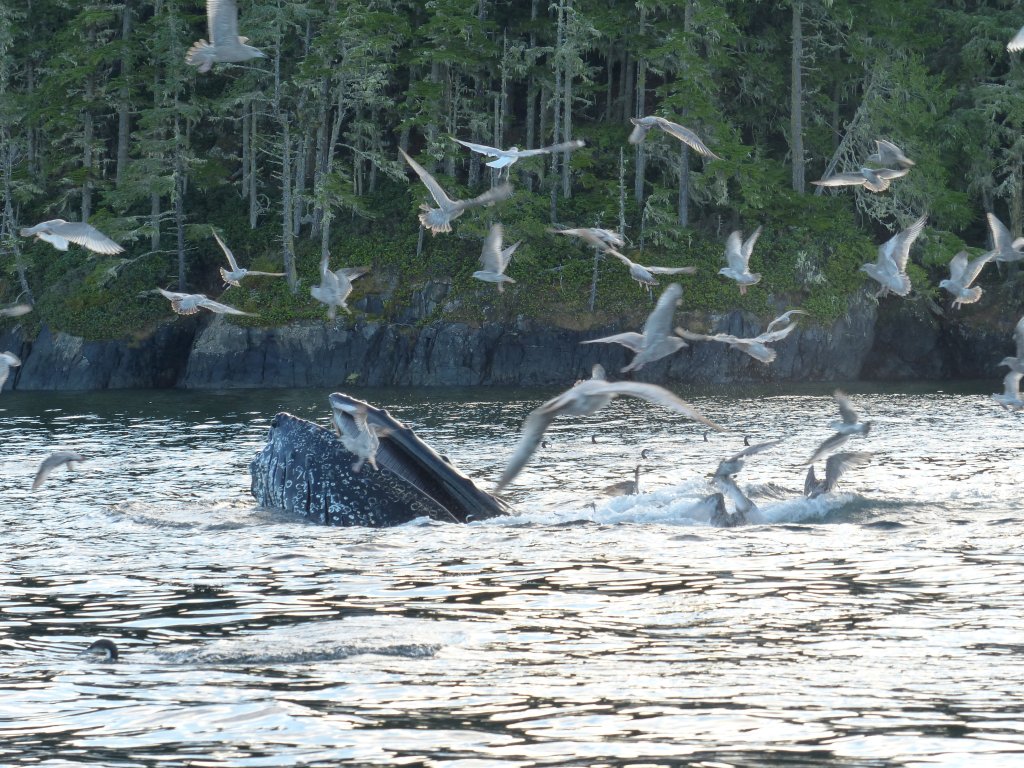As the BC Bird Trail expands throughout the province, we wanted to shine a light on the people on the ground in these communities. Learn more about the bird-watching experiences in these destinations through the eyes of the experienced locals with our BC Birders profile series.

Gord Curry is a bird enthusiast, blog writer and member of the Malcolm Island Bird Club. Gord also completes waterbird surveys for Birds Canada, and organizes a local Christmas Bird Count.
Gord was curious about the birds by his house as a child in Victoria, BC, in the mid-60s. Equipped with a bird book, he would set out on hikes with a few friends, find feathers, and identify the local birds. It was not until 2012 that Gord reconnected with birding while living in Sointula, “an incredibly rich environment.” Water from the Chilcotin Plateau flows through the mainland inlets and Salish Sea waters through Johnston Strait, mixing with the more open ocean waters of Queen Charlotte Strait, converging in the Blackfish Sound area. “It all comes to a head near Malcolm Island—there is a lot of productivity and upwelling making food available to fish, birds, mammals, and whales right next to us,” Gord explains.
“Birding really develops your ability to be present outdoors – and with being super present – you will often see things others miss.”
Gord Curry
Initially, he created a spreadsheet to track bird species, but a friend introduced him to eBird, a fantastic resource for both newbies and professional birders. Great spots for birding on Malcolm Island include walking or cycling along Kaleva Road. It runs along the ocean, with mostly forest lands on the other side. Rough Bay is a “rich area with mudflats and a small coho salmon stream, a nice, concentrated spot to see birdlife,” as are the waterfronts of Port Hardy, Port McNeill, Alert Bay, and the estuaries of the Nimpkish, Cluxewe, and Quatse Rivers. Sointula’s waterfront is on the lee side (sheltered side) from the weather, so many birds congregate there, especially in the winter. Besides all the water birds, some of the frequently seen terrestrial birds include pacific wren, kinglets, thrush, and, in spring and summer, the most northerly nesting colony of western purple martin in North America. “I started this nesting colony by installing nest boxes in 2017 with 12 active nests in 2023,” Gord shares.

Many birders have Triangle Island on their bucket list. Triangle Island, 45 kilometres off the Northern tip of Vancouver Island, is an extremely exposed open ocean breeding colony for many marine birds, including murres, auklets, guillemots, and two species of puffin. Reaching Triangle requires chartering a suitable boat and a heavy dose of good weather luck to be successful. You cannot land due to its protected status, but you are permitted to cruise around and use your camera and binoculars—”Otherworldly!”

Gord has a few birding tales to share. He observed a snowy owl at Mitchell Bay, an unusual raptor for the area. The owl held a mink in its talons as it sat on the beach. Gord watched it from cover for half an hour before the mink, an aggressive and “dangerous meal,” finally died. Also, while out on his boat, Gord watched diving marine birds pushing herring to the surface, providing frantic juvenile gulls with access. Then, a humpback whale lunged at the school of herring and ended up catching many gulls it couldn’t swallow (humpback throats are the size of a large human fist). Next, the whale quietly came to the surface and released all these bedraggled juvenile gulls – they were out of there and hopefully learned a lesson.” His favourite bird to watch? “The shearwater and albatross and their soaring flight following the contours of the ocean swells (because they) appear so effortless.”

A 12 x 32 Canon image stabilization binocular is Gord’s go-to. It allows for greater magnification with stability compared to standard binoculars. He also does two waterbird surveys monthly for Birds Canada. “Birding really develops your ability to be present outdoors – and with being super present – you will often see things others miss.” The waterfowl spring and fall migration is a favourite of Gord’s; “it just puts you in another realm.” He highly recommends checking out eBird to learn where the hotspots are. But, he stresses, “Slow down, take your time, observe, and see and hear what is going on around you – or you won’t.”



